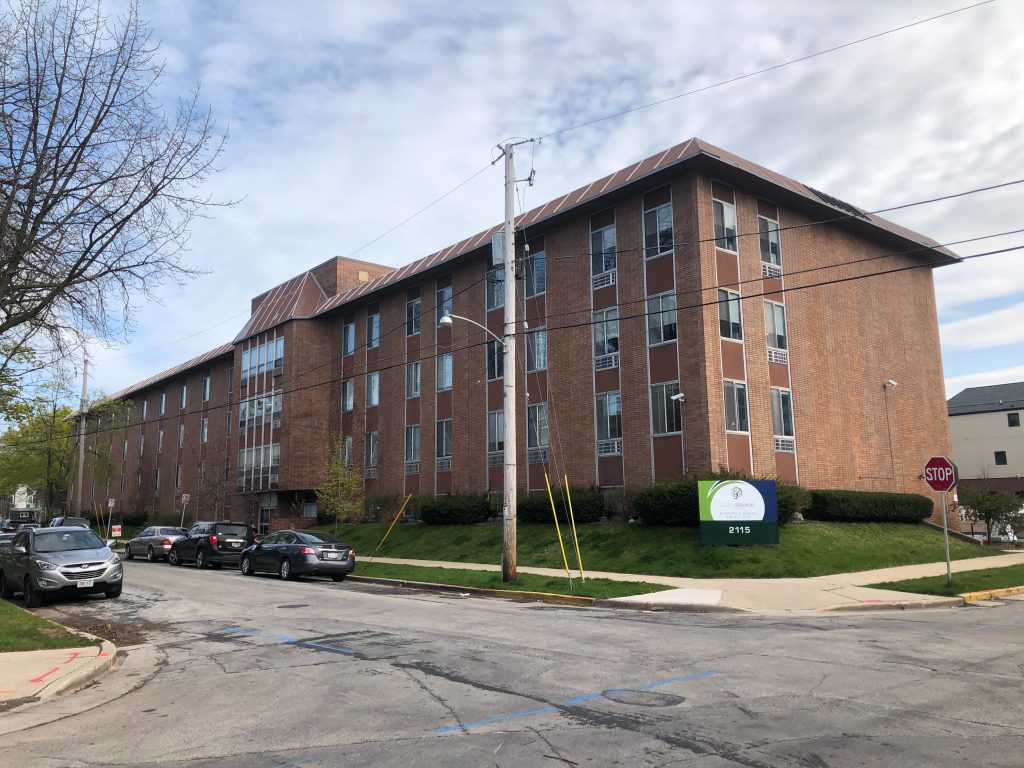Nursing Homes Struggle to Find Staff
New report finds state’s economy grew swiftly since pandemic, with some sectors trailing.

Edenbrook Lakeside, a nursing home located at 2115 E. Woodstock Pl. Photo by Jeramey Jannene.
After a major drop at the start of the pandemic, employment levels in Wisconsin have bounced back to only slightly below pre-COVID levels. But a new report from the Wisconsin Policy Forum shows the workforce landscape has changed.
Ari Brown, senior research associate at Wisconsin Policy Forum, said the state’s recovery has been swift. Employment in December was only 2.4 percent below pre-pandemic levels. But he said the recent growth has been uneven across the economy.
“There’s just really been this big kind of fundamental shift in the way that we’re spending our money,” Brown said. “A lot more ordering is happening online, rather than in person.”
Arts, entertainment and recreation was also hit hard, with employment 14.4 percent below pre-COVID levels as of December.
One change, though, is especially concerning, Brown said. Employment in the health care and social assistance sector fell 3.9 percent, with employment in nursing and residential care facilities shrinking by roughly 13 percent.
“It is alarming to see these trends and to see the employment in that sector hitting its lowest level in a really long time — at this time when we’re only going to need more and more individuals,” he said.
That’s because the state’s population is aging. And with too few young people replacing retiring workers, he said, the problem is bound to get worse.
Those staffing shortages have already caused major issues, said Rene Eastman, vice president of LeadingAge Wisconsin, an association of nursing homes across the state. She said the ongoing pandemic has strained nurses’ mental health.
The job vacancy rate among LeadingAge Wisconsin long term care providers is 28 percent, she said. Those staffing shortages, along with increased regulations, have forced facilities to turn away patients or close entirely. Others have de-licensed beds. According to the Department of Health Services, nursing homes across the state have closed over 8 percent of beds since the start of the COVID-19 pandemic.
“They are struggling to admit residents that they typically would have been able to care for in the past,” she said. “And as a result, there are more people waiting in hospitals unable to find placement in nursing facilities.”
Facilities have taken steps to retain nurses, she said, like paying recruitment bonuses to existing employees who refer new staff members and paying workers who pick up extra shifts. Eastman also said they’re pushing policymakers to direct funding at the issue, but, like many suffering economic fields, staffing shortages persist.
Nursing homes struggle to find staff as Wisconsin economy bounces back was originally published by Wisconsin Public Radio.




















This issue is very personal to me (& should be for everyone given the rising number of seniors). My mother entered a local nursing home just one month prior to the pandemic taking hold. Imagine this elderly Alzheimer’s patient in a wheelchair already confused by her new “home,” with no visitors allowed for over a year! It was heartbreaking for us and caused rapid irreparable harm to my mother. The beleaguered nursing home staff did the best they could, God bless them.
If this country is serious about addressing senior care and growing mental health issues, we must find a way to increase salaries for this key underpaid employment sector. We also have to implement new strategies for encouraging new people to enter this essential field, beginning in high school. Trust me, you don’t want to be placed in my or my mother’s circumstance. But chances are very high that you will be.